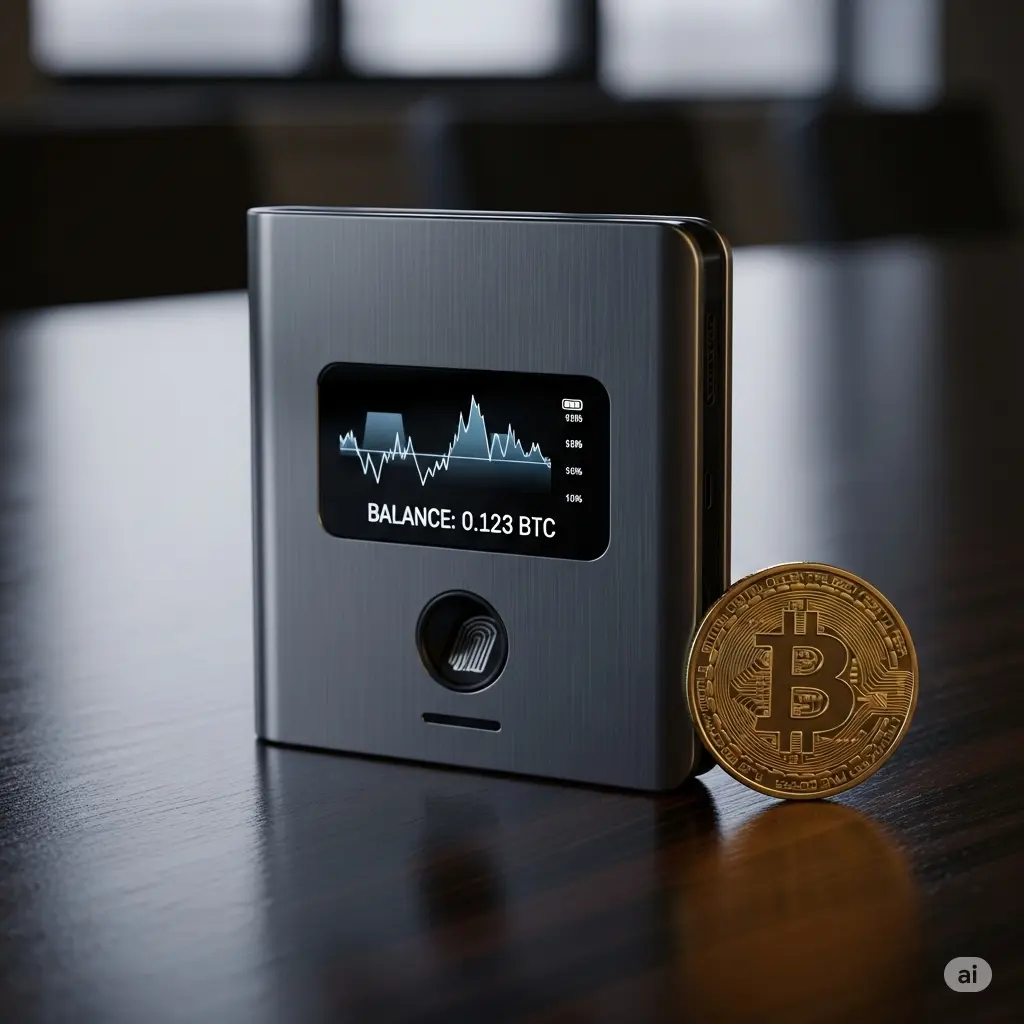One Secure Crypto Wallet to Rule Your Digital Empire
In the ever-expanding universe of cryptocurrencies, one element stands above the rest in importance and that’s the secure crypto wallet. With more people entering the markets, dabbling in DeFi, NFT drops, and Web3 projects, safeguarding your digital assets has never been more critical.
Imagine having one secure crypto wallet that’s the crown jewel of your digital empire reliable, feature‑rich, and robustly secure. Whether you’re a veteran trader or a curious newcomer, the right wallet is your first line of defense against hacks, phishing scams, and human error.
This blog post brings you complete, beginner-friendly guidance under the banner of Global Crypto Sports, making sure you not only understand what makes a wallet secure, but also how to choose, use, and maintain one in 2025.
Why Should You Care About a Secure Crypto Wallet?
Definitions You Need
- Blockchain: A decentralized digital ledger where crypto transactions are recorded. Every transaction forms a “block,” chained together, making tampering very difficult.
- DeFi (Decentralized Finance): Financial services that run on blockchain networks without traditional middlemen (banks, brokers). Examples include lending protocols, decentralized exchanges, and yield farms.
- Web3: The next generation of the internet is decentralized, user-controlled, and uses blockchain technology. You own your data and digital identity.
Within this ecosystem, your secure crypto wallet is the gateway. It stores your private keys, signs transactions, and can interface with DeFi, NFT marketplaces, and Web3 dApps only if it’s secure.

Understanding Wallet Types: Cold vs Hot, Hardware vs Mobile vs Decentralized
Cold Wallet vs Hot Wallet
| Wallet Type | Definition | Pros | Cons |
|---|---|---|---|
| Hot Wallet | Software-based, connected to the internet (e.g., mobile or desktop apps) | Convenient, fast access, supports DeFi and trading | Higher risk of online attacks, malware |
| Cold Wallet | Offline storage literally “cold” like hardware devices, paper wallets | Maximum security, minimal attack surface | Less convenient, not ideal for frequent use |
Hardware Wallet (Cold Wallet)
A hardware wallet is a physical device like a USB stick, that stores private keys offline. Examples include Ledger, Trezor, and others. This is widely considered the best crypto wallet 2025 for serious asset protection.
Pros:
- Keeps private keys offline even when connected for transactions
- Immune to most types of malware
- Portable, durable, with PIN and backup seed phrases
Cons:
- Must pay upfront for the device
- Slightly slower to use than a mobile wallet
- Risk of losing or damaging the physical device
Mobile Wallet (Hot Wallet)
A mobile wallet is an app on your phone, think Trust Wallet, MetaMask mobile, or Coinbase Wallet. You can easily send, receive, and swap.
Pros:
- Highly convenient
- Great for frequent trading or DeFi/NFT interaction
Cons:
- Vulnerable to phone malware or phishing
- Potential compromise if your phone is lost/stolen
Decentralized Wallet
Often refers to software wallets connected to Web3 services without custodianship. Examples: Metamask, WalletConnect-compatible apps.
Benefits:
- You control your keys (noncustodial)
- Seamless access to DeFi and Web3
Risks:
- If you lose your keys or backup, you lose your funds
- Still requires vigilance against phishing and smart contract vulnerabilities
Real‑World Examples & Case Studies
Case Study 1: A DeFi Trader Using a Hardware Wallet
Sarah, a DeFi yield farmer, uses a hardware wallet (cold wallet) for long-term holdings and connects it through WalletConnect when she swaps or stakes. She enjoys crypto wallet security with peace of mind, knowing her keys never touch the internet except when signing.
Case Study 2: Casual User with Mobile Wallet
John buys NFTs and trades on decentralized exchanges casually. He uses a mobile wallet for convenience but one day, a phishing link infects his phone and drains his funds. This highlights the risks of hot wallets.
Lesson
Many experienced users combine both: store large holdings in cold storage, and use hot wallets for day-to-day transactions. This hybrid approach provides both security and usability.
Choosing the Best Crypto Wallet 2025

What to Look For in a Secure Crypto Wallet
- Strong crypto wallet security PIN protection, secure chip, hardened firmware.
- Backup and Recovery: Reliable means to restore access: seed phrases, encrypted backups.
- Support for Multiple Chains E.g., Ethereum, BSC, Solana, etc. (if relevant to your portfolio).
- Comprehensive Features Integration with DeFi, hardware + mobile interfaces, OTC, staking.
- Open Source or Audited Transparent code or third-party audit boosts trust.
- User Support / Community: Good documentation, responsive customer service, active forums.
Deep Dive: Pros & Cons Table
| Type | Pros | Cons |
|---|---|---|
| Hardware Wallet (cold) | Offline keys, high security, ideal for long-term storage | Costly purchase, less convenient for frequent use |
| Mobile Wallet (hot) | Instant access, mobile-friendly, easy to use with DeFi/NFTs | Higher risk of hacks, phishing, device attacks |
| Desktop Wallet (hot) | More screen space, robust UI | Still internet-connected, susceptible to malware |
| Paper Wallet (cold) | Very cheap, fully offline | Fragile, risk of loss/damage, complex to use securely |
| Multi‑signature Wallet | Shared control, strong security in groups | Complex setup, less suited for individuals |
Stronger Security = More Peace of Mind
Top Security Practices (regardless of wallet type)
- Enable strong PINs/passwords
- Use 2FA when available (e.g., for cloud backups)
- Never share your seed phrase
- Regularly update firmware/apps
- Avoid phishing link-type URLs manually
- Backup your wallet securely and verify your backup works
Step‑by‑Step: How to Set Up a Secure Crypto Wallet
- Choose Your Wallet – Decide based on security vs convenience: e.g., Ledger (hardware) vs MetaMask (hot).
- Buy from Official Source – Avoid used or third-party resold hardware (security risk).
- Initialize Device – Set PIN, write down seed phrase on paper; keep it offline.
- Test Restore – Use your seed phrase on a test machine (if possible) to ensure it works.
- Start with Small Amounts – Send a small test transaction before loading large sums.
- Enable Additional Features – 2FA backup, passphrase (optional), and firmware updates.
- Regular Backup Checks – Verify your seed phrase remains safe (e.g., in a fireproof safe).
For Intermediate Investors: Additional Strategies
- Use a passphrase (“25th word”) on top of seed phrases.
- Split backups using Shamir’s Secret Sharing (if wallet supports).
- Layer cold and hot usage: store core holdings on hardware, swap or trade with hot wallets.
- Use multisig for high-value holdings multiple approvals required to move funds.
- Stay informed: monitor firmware or security updates from your wallet provider or Global Crypto Sports news alerts.
Frequently Asked Questions (FAQ)
1. What is the most secure crypto wallet?
In 2025, a hardware wallet (cold wallet) from reputable brands offering secure chips and audited firmware remains the most secure option for long-term storage.
2. Should I use a mobile wallet or a cold wallet?
- Use a cold wallet for long-term holdings or large amounts (best security).
- Use a mobile wallet if you need frequent access or to interact with DeFi but be extra cautious about security.
3. What is a decentralized wallet?
A wallet where YOU control the private keys, without any intermediary. Examples include Metamask, Trust Wallet, or hardware wallets when connected to Web3 apps.
4. How do I back up my wallet?
Write down your seed phrase (usually 12–24 words) on paper or steel backup and store it in a secure, offline location. Test restoring once to ensure it works.
5. How do I balance convenience with security?
Adopt a hybrid strategy: store the majority of your assets in a cold wallet, use a hot wallet for daily activities, and maintain strict backup and anti-phishing protocols.
6. Can a wallet be hacked?
Yes, especially hot wallets connected to the internet. Risks include malware, phishing, compromised devices, and smart contract exploits. Thus, proper security steps are essential.
7. What if I lose my hardware wallet?
You can restore access using your seed phrase (assuming it’s backed up securely). Without it, the wallet and funds are irretrievable.
Conclusion
Your digital empire is only as strong as the fortress guarding it and that fortress is your secure crypto wallet.
By making informed choices choosing the best crypto wallet 2025 for your needs, combining cold and hot solutions, and maintaining rigorous crypto wallet security practices you can confidently explore DeFi, NFTs, and Web3, without fearing for your assets.
Next steps for you:
- Decide whether you need the convenience of a mobile wallet or the protection of a hardware wallet or both.
- Invest in a reputable device (if choosing hardware), and practice wallet backup and restoration.
- Stay updated through trusted sources like Global Crypto Sports, where we regularly post wallet tutorials, security updates, and industry trends.
- Share this post with friends or fellow investors to spread security awareness in the crypto community.
Fortify your holdings, safeguard your future and rule your digital empire with confidence!
